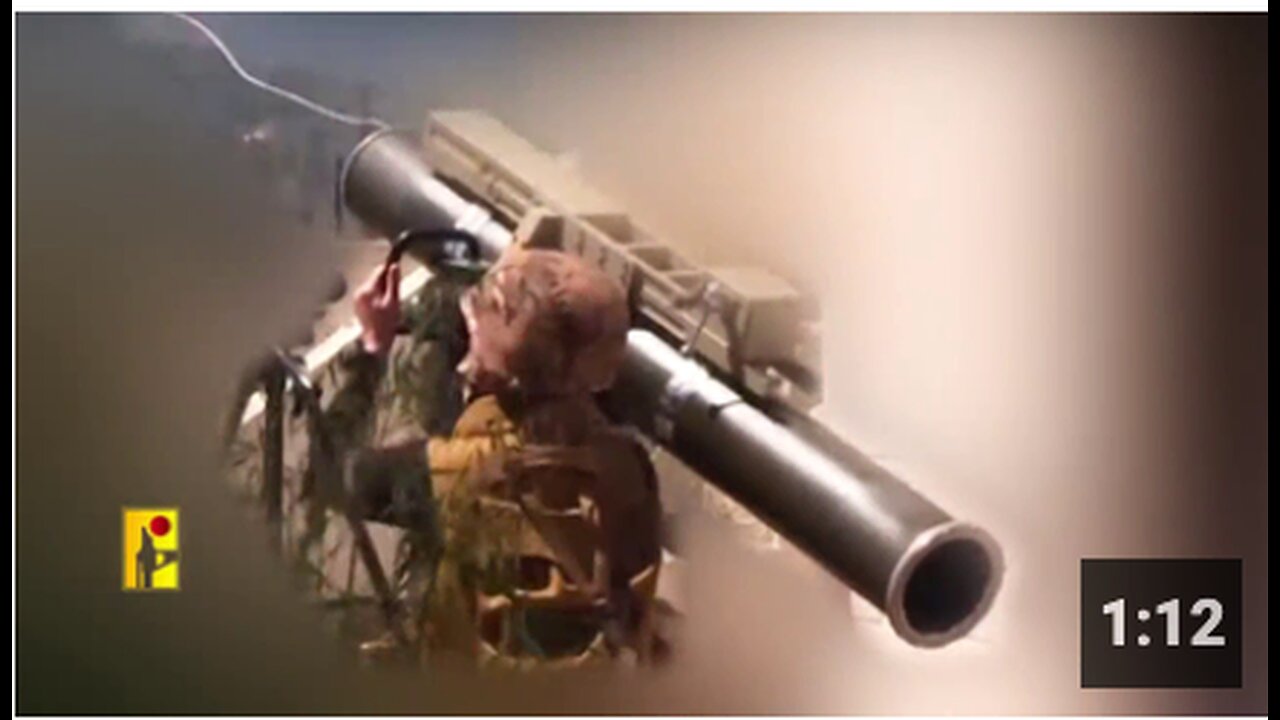Premium Only Content

Hezbollah Takes Out Israeli Radar With New Advanced Iranian-Made Missile
Hezbollah has successfully used an advanced Iranian-made anti-tank guided missile (ATGM) to take out a counter-battery radar of the Israeli Defense Forces (IDF).
The group released video footage of the attack on April 18, noting that it took place a day earlier. The radar, identified as an American-made AN/TPQ-37 Firefinder, was deployed at a key air traffic control base of the IDF on Mount Meron, some eight kilometers away from the border with Lebanon.
The AN/TPQ-37 was developed to detect and track incoming artillery and rocket fire to determine the point of origin for counter-battery fire. The S-band radar can detect an artillery shell from 30 kilometers and a rocket from up to 50 kilometers.
Hezbollah fighters used what appears to be a ground-launched version of the Iranian Almas-3 ATGM to take out the counter-battery radar.
Almas is a copy of the Israeli Spike family of ATGMs that was first unveiled by Iran some four years ago. The Almas-3 version is said to have a range of ten kilometers.
Similar to the Spike ATGM, Almas is equipped with an electro-optical or an infrared imaging seeker. The missile has a top-attack feature, meaning it can strike its target from above as a form of plunging fire. It can also hit targets behind the line of sight.
Hezbollah has been using Almas ATGMs against the IDF since the outbreak of the clashes on the Lebanese-Israeli border on the backdrop of the Israeli war on the Palestinian Gaza Strip. However, only the lighter Almas-1 version was spotted with the group’s fighters before.
The IDF lost several vehicles, including main battle tanks, and radars to Hezbollah’s Almas missile. On top of that, the group used missiles of this type in an attack on a building in the border settlement of Arab al-Aramshe that wounded more than18 Israeli troops and civilians.
The appearance of Almas missiles with Hezbollah was not only significant because of the missiles’ advanced capabilities, but also because it exposed a serious intelligence failure of Israel which has claimed for more than a decade that its so-called “war between the wars” covert military campaign, that mainly included strikes on Syria, was hindering the delivery of Iranian weapons to the group.
Source @South Front
-
 3:31
3:31
Biological Medicine
1 hour agoParasites, Tumors, Syncrometer, Indoctrinated Doctors and Some Detox Methods by Dr. Hulda Clark
46 -
 1:07:59
1:07:59
BonginoReport
5 hours agoBoston Mayor Defies Trump, Protects Illegals - Nightly Scroll w/ Hayley Caronia (Ep.115)
98.4K59 -
 40:45
40:45
Donald Trump Jr.
6 hours agoPeace by Peace: Solving One Problem After Another | Triggered Ep.268
52.1K52 -
 LIVE
LIVE
FrizzleMcDizzle
2 hours ago $0.43 earnedRemnant 2 - Dark Souls-like Shooter?!
120 watching -
 LIVE
LIVE
FoeDubb
1 hour ago🏰KINGDOM MENU: 🏈FOOSBALL & 🎮DELTA FORCE PEW PEWS DILLY DILLY!!
31 watching -
 11:43:31
11:43:31
GritsGG
13 hours agoWin Streaking! Most Wins 3390+ 🧠
60.9K -
 1:08:29
1:08:29
TheCrucible
5 hours agoThe Extravaganza! Ep. 24 (8/19/25)
79.3K18 -
 4:22:25
4:22:25
sophiesnazz
6 hours ago $0.83 earnedLETS TALK ABOUT BO7 !socials !specs
19.1K -
 1:27:30
1:27:30
Redacted News
6 hours ago"There will be consequences!!!" Trump issues big threat to Putin ahead of peace summit | Redacted
104K165 -
 LIVE
LIVE
Amish Zaku
4 hours agoWar Thunder - Tank Tuesday - then Peak
55 watching